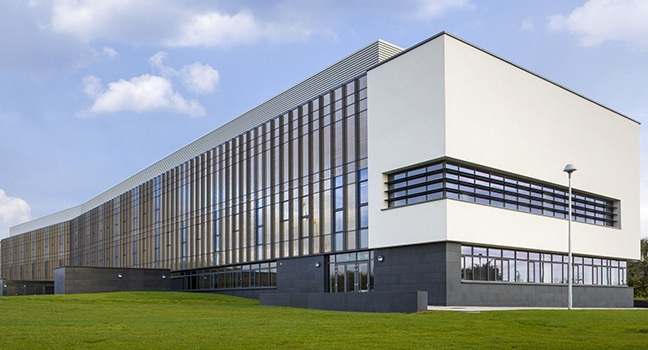Our keyboard tray is sturdy and durable, its thickness is about 1.2 mm. Its load capacity is from 30-60kg. There are also ventilation holes at the bottom of the keyboard tray to increase air circulation.
Usage: Network cabinet accessories
Certification: CE, RoHS, GS
Color:Ral7035, Ral9004,etc
Material: SPCC Cold Rolled Steel
Trademarks:TNE, OEM, ODM
Specification: CE, RoHS
HS Code:8517709000
Type:Network Cabinet Accessories
Installation:19"installation
Condition: New
Logo: Silk Print, Aluminum Sticker, Rubber Sticker
Shipping: Sea, Air, Train, Truck
Certificate: Ce.RoHS
Transport Package: Carton
Origin: Ningbo China
The rack keyboard tray complies with ANSI/EIA RS-310-D, IEC297-2, DIN41491; PART1,
DIN41494;PART7,GB/T3047.2-92 and ETSI standard
Features
Using for support keyboard*Material:SPCC cold rolled steel*Thickness:1.20 mm
Color: Black, Grey, or customized
Loading capacity:30~60 KG as per tray size
Surface Finish: Degreasing, Pickling, Phosphoric, Powder coated*Ventilation holes to keep cabinet inside air flowing

In modern enterprise network architecture, the centralized management of equipment such as servers, switches, and routers is crucial. Network cabinets, as the support and protection carriers for netwo...
READ MOREIn data centers and office environments, network cabinets are essential facilities for storing and protecting servers, routers, switches, and other network equipment. A properly installed and configur...
READ MOREIn the IT infrastructure of modern businesses, the management and protection of network equipment are crucial. As businesses expand, data traffic increases, and technology equipment is constantly upgr...
READ MOREWhat is the main purpose of the ventilation holes designed at the bottom of the 19" Server rack's sliding shelf?
The main purpose of the ventilation holes designed at the bottom of the 19" Server rack's sliding shelf is to improve the air circulation efficiency inside the server cabinet, thereby optimizing the heat dissipation performance of the equipment.
As the core equipment of the data center, the efficient and stable operation of the server is crucial to the performance and reliability of the entire system. However, when the server handles complex tasks and data exchange, it will generate considerable heat, which is generated by the high-speed operation of its internal high-performance CPU, memory, hard disk and other components. If this heat cannot be effectively dissipated, it will cause the internal temperature of the server to rise sharply, which will cause a series of problems.
Excessive temperature will directly affect the working efficiency and stability of the electronic components inside the server. As the temperature rises, the resistivity of the electronic components will change, and the heat generated when the current passes through will also increase, forming a vicious circle. This situation will not only increase the power consumption of the server, but may also cause the data processing speed to slow down, and even cause data errors or loss.
Long-term operation in a high temperature environment will accelerate the aging process of the internal components of the server and shorten its service life. High temperature will accelerate the oxidation, expansion and contraction of the material, leading to problems such as loose connectors and cracked insulation layers, thereby increasing the probability of failure. In addition, high temperature may also cause serious faults such as solder joints falling off and capacitor explosion on circuit boards, posing a threat to the stable operation of the server.
In order to prevent these problems from happening, special attention is paid to ventilation and heat dissipation in the design of server cabinets. As an important part of the cabinet cooling system, the design of vents is directly related to the air circulation efficiency and heat dissipation effect inside the cabinet. The reasonable layout and size design of the vents can ensure that cold air enters the bottom or side of the cabinet smoothly and flows along the surface of the server components, absorbing and taking away heat. Subsequently, the hot air is discharged through the exhaust port on the top of the cabinet, forming a continuous heat convection cycle.
In a closed server cabinet, if there is not enough ventilation, heat will accumulate inside the cabinet, forming a "heat island effect". This effect will aggravate the temperature gradient inside the cabinet, making the temperature in some areas too high and the temperature in other areas relatively low. This will not only increase the operating burden of the server, but also may cause uneven temperature distribution inside the cabinet, affecting the overall performance and stability of the server.
Therefore, the design of the vents is not only to reduce the temperature inside the server, but also to prevent the generation of the heat island effect and create a uniform and stable heat dissipation environment for the server. This environment helps improve the overall performance of the server, reduce the failure rate, and extend its service life. In addition, the design of the ventilation holes also has certain flexibility and scalability. According to the heat dissipation requirements of different servers and application scenarios, the cabinet administrator can optimize the heat dissipation effect by adjusting the shelf position, increasing the number of fans, or changing the fan speed. This flexibility enables the cabinet to adapt to different working environments and load requirements, ensuring that the server always runs in the best state.
In summary, the main purpose of the ventilation holes designed at the bottom of the 19" Server rack's sliding shelf is to improve the air circulation efficiency inside the cabinet, optimize the heat dissipation performance, and ensure that the server runs at the best operating temperature, thereby improving its overall performance and stability.